SAR ADC Explained!
Why to learn about SAR ADC?
SAR ADC is a standard AUTOSAR opts for. That’s why you see most of the automotive microcontrollers can be observed having SAR ADC and SAR stands for Successive Approximation Register. You can see the below picture which I extracted for verification of this fact.


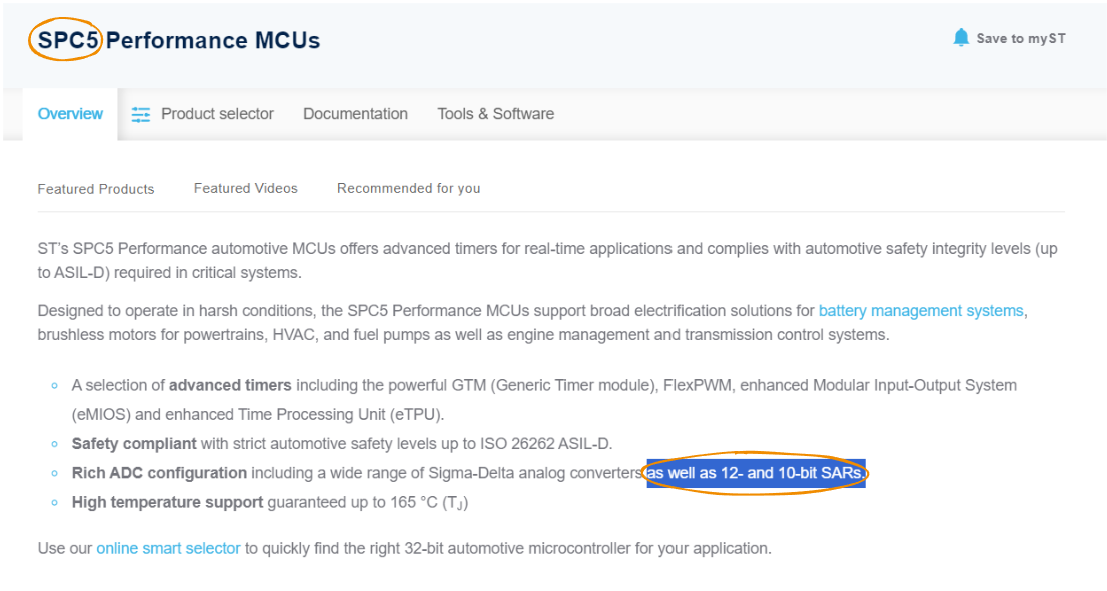
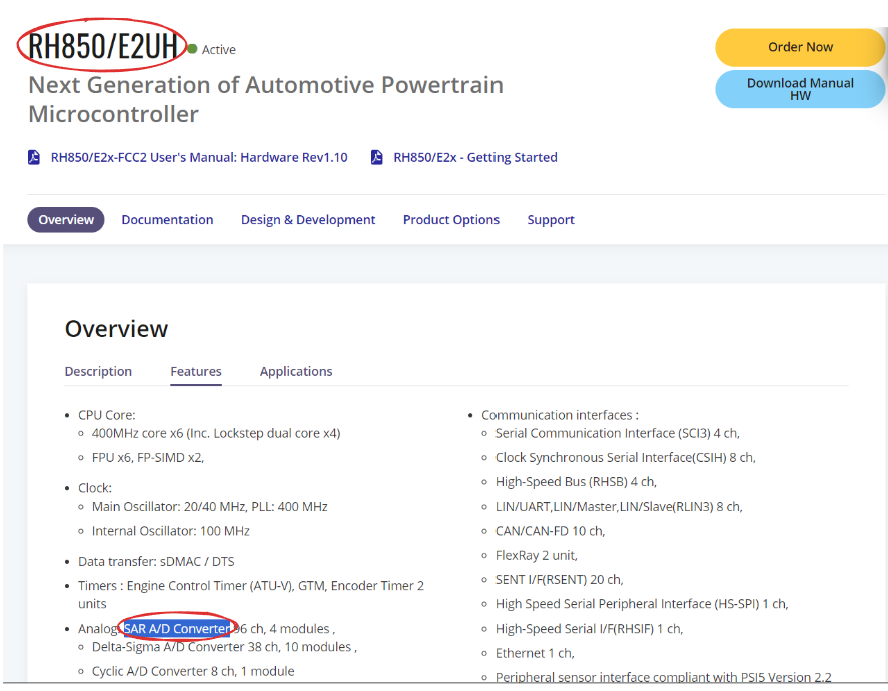

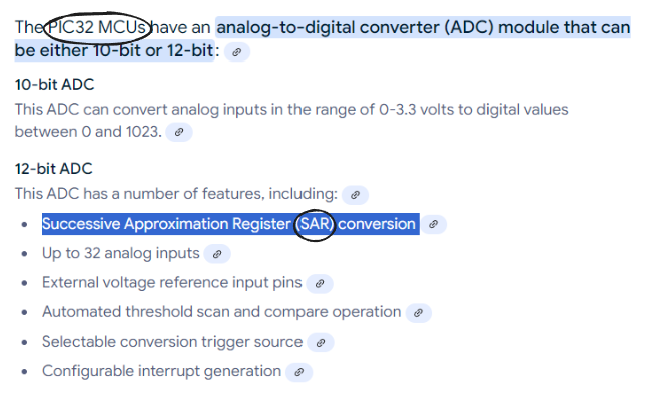
Microcontrollers which are verified:
- NXP S32K1xx Series
- NXP MPC5xxx Series
- STMicroelectronics SPC5 Series
- Renesas RH850 Series
- Infineon AURIX TC3xx Series
- Microchip PIC32 Series
Why AUTOSAR likes SAR ADC over others?

SAR ADC working is most suitable due to three major factors mentioned below:
- High Conversion Speed with Accuracy: SAR ADCs are fast to handle conversion like real-time sensor data conversion while holding its precision as it is. This conversion can be like throttle control, battery management, and other critical functions.
- Power Efficiency: Power consumption is one of the most important factors in any automotive application especially electric vehicles. SAR ADC consumes comparatively less power rather than ADC like FLASH ADC.
- Scalability: SAR ADCs offer a trade-off between speed, resolution, and area, which is crucial in automotive designs where space and performance both matter.
Comparing SAR ADC with Flash and Sigma-Delta ADC
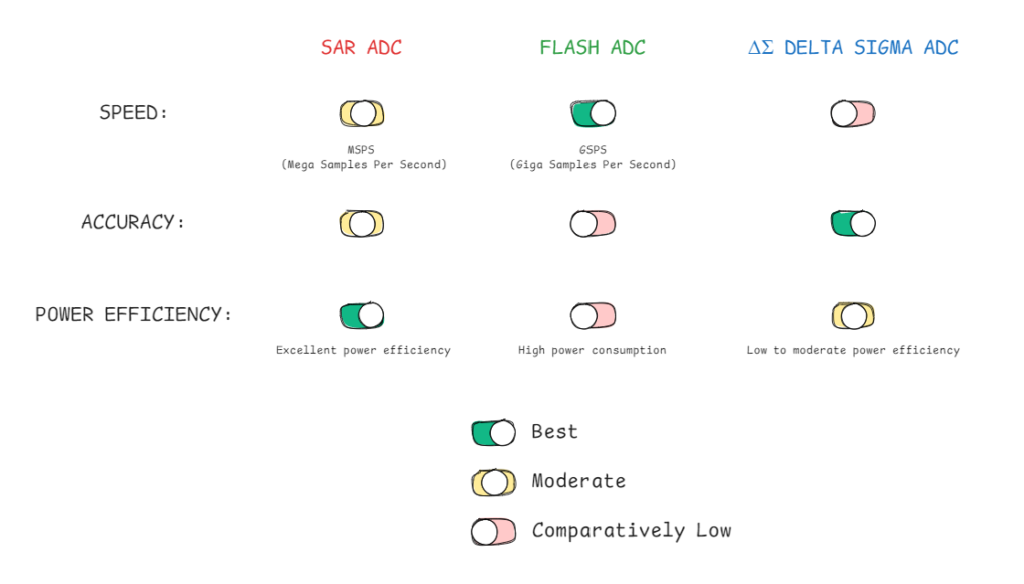
Flash ADC: The fastest type of ADC, converting signals in just one clock cycle. This speed comes at the cost of power consumption and size, as it requires one comparator per bit of resolution. Given the complex needs of automotive systems, this increased power draw and large footprint make Flash ADCs impractical for most real-time automotive control systems.
Sigma-Delta ADC: Offers exceptional accuracy by oversampling the input signal and using noise-shaping techniques. However, its conversion speed is much slower compared to SAR ADCs. This makes it unsuitable for fast, real-time sensor data processing, though it shines in applications where high precision is needed, such as audio or pressure measurement.
SAR ADC stands between these two, offering sufficient speed, accuracy, and power efficiency. This balance makes it the top choice for most automotive microcontroller designs, especially in safety-critical applications like engine control, where both speed and accuracy matter.
How SAR ADC Works
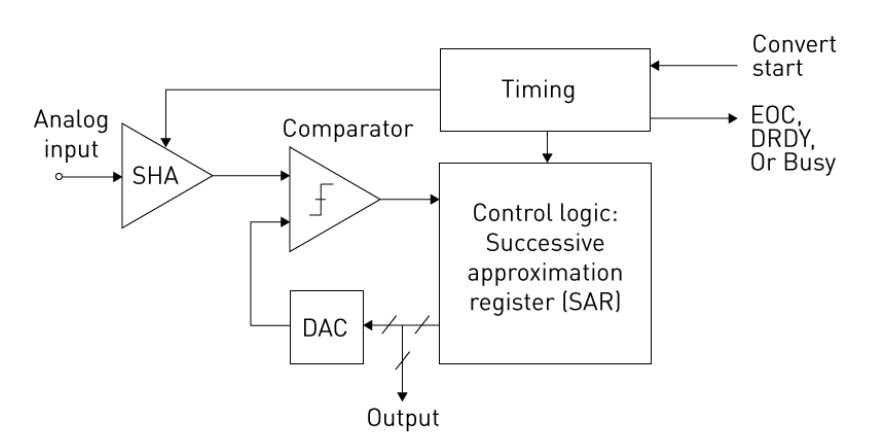
Sample & Hold (S/H) Block: This block holds the analog input signal steady while the ADC performs the conversion. The process begins by capturing the input voltage and freezing it momentarily to allow precise comparisons during the conversion.
Comparator: The comparator checks the DAC’s output against the input signal at every stage of the conversion. It decides whether the next bit in the SAR register should be a ‘1’ or a ‘0’ based on whether the input signal is greater or lesser than the DAC output.
SAR Register: This is a shift register that stores the output bit by bit as the conversion proceeds. The SAR register’s value evolves with each step of the approximation process, eventually containing the final digital equivalent of the input analog signal.
DAC (Digital-to-Analog Converter): The DAC generates a voltage based on the digital bits already stored in the SAR register. The comparator then compares this DAC output with the input signal. The DAC’s resolution is crucial since it must match the resolution of the SAR ADC.
Step-by-Step Example: How SAR ADC Calculates an Input Signal
Example Setup:
- Reference Voltage (Vref): 5V
- Resolution: 4 bits (for simplicity)
- Input Voltage (Vin): 2.6V
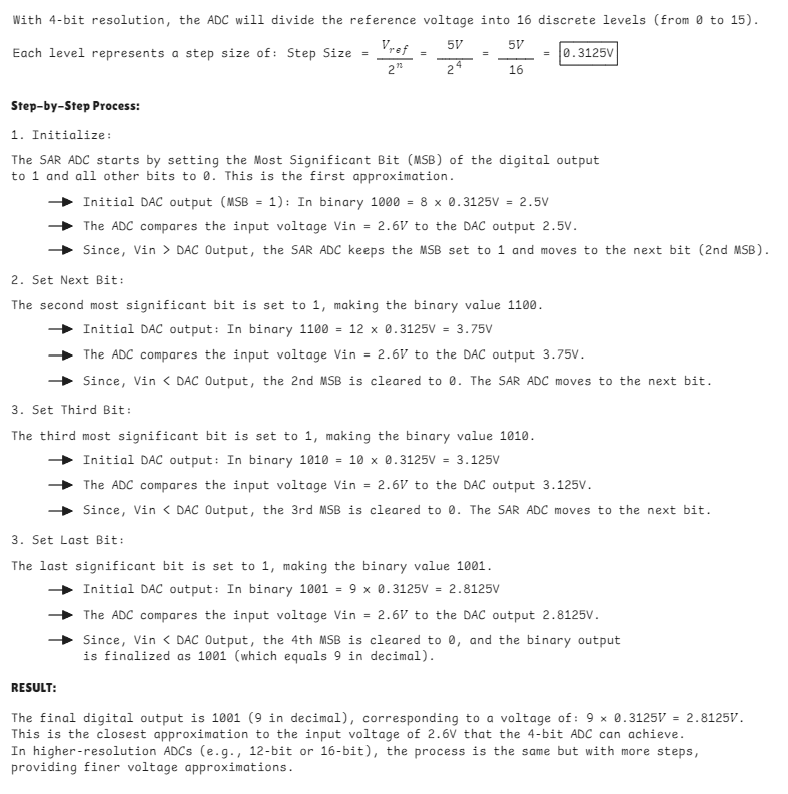
Author

